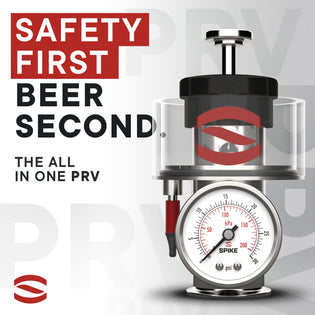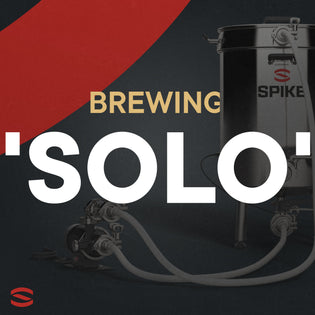
Among brewers, the “controversy” surrounding which to use has swirled on for years. Some brewers (Sierra Nevada, Deschutes, Victory, et al.) hold to the ideal that whole cone hops provide a definitive and unique hop character that lacks in specifics as to what that preferred quality may be. While most of the craft brewers in the United States have utilized pellet hops since the beginning, the reasons for this discrepancy amongst breweries are myriad and just a few of the major ones shall be covered below.
Whole Cone Hops
What are Whole Cone Hops? Whole cone hops are those hops that are harvested and kilned, then baled after a conditioning time of usually no more than 24 hours. The bale packaging for many years was burlap but this has fallen out of favor in recent times being replaced by a vinyl material. Bales come in multiple sizes throughout the world but the common American bale weighs approximately 200 pounds (more or less depending on the baling machine). Thus, beneath the packaging, is pressed whole cone hops that are layered because of the pressing of whole cone hops.
Why use Whole Cone Hops? The thought behind using whole cone hops varies among the brewers that use them. Perceived advantages include less processing of a raw material, greater ability to select specific hop characters by contracting individual lots, price savings in reduced processing, and quicker turnaround on contracted hop varieties. The flavor impact and loss of utilization are controlled by the craft brewers with added processes or equipment. The overarching nostalgia of whole cone hops plays little role in choosing to remain a whole flower hop brewery. Intensive research with flavor panels has verified in many cases that whole cone hops are the right choice for the craft brewers that select them.
Why to not use Whole Cone Hops? Many issues arise with the selection of whole cone hops as the main source for hopping. Whole cone hops require massive amounts of cold storage space to remain as fresh as possible. Also, the packaging material is not sealed, thus oxidation effects the outer layers or exposed layers of hops. At times, the cleaning methods of incoming harvested hops is at times inadequate and thus whole cone hops do not always undergo a secondary cleaning of stick and leaf material. Variation is high in baled hops as individual bales can have slight or major variation in character and flavor impact, as well as difference in alpha acid content. This is mitigated by heavy mixing in the cleaning, kilning, and packaging process however not as much as pelleting provides.
“Whole cone hops are labor intensive, as brewers are forced to sift through every bit of hop material to further clean them on their way to the kettle or fermentation vessel.”
Also, due to the extremely high load of large particulate involved with whole cone hops, brewers are forced to create or include large straining equipment (hopbacks, inline strainers, etc.) to filter out the large amount of vegetal material.
Whole cone hops are generally less efficient than their pellet counterparts at providing alpha acid for isomerization in wort however this alone has lost its weight in selecting to use either product.
Pellet Hops: It would make sense right?
What are Pellet Hops? Most breweries use pelleted hops as their processing method of choice. Pelleted hops come from one of two sources. Pellets can be created when a bale of hops is broken down by a “bale breaker”, milled, and then pressed through dyes into pellets. A newer method is to transfer whole hops from the conditioning floor directly to the pellet mill without baling being done before hand. The latter concept was designed to reduce overall processing.
Why use Pellet Hops? Pelleted hops tend to provide brewers with multiple perceived benefits. Storage of pelleted hops requires immensely less cold storage space. They are much less labor intensive as brewers are able to simply pour them out of their sealed bags without much concern for further cleaning. Pellet hops are also packaged in nitrogen purged bags so they may be stored for much longer without excessive oxidation occurring if unopened. Once opened, this benefit is nullified, however the packaging is resealable with vacuum sealers. Coming in a multitude of packaging sizes, pellet hops can be acquired in stages of ounces or pounds, with the normal packaging size being forty-four pounds for commercial brewers and one ounce for home brewers. Thus, they are easy to move and transport. Also, due to their compact storage and size, commercial brewers can save massively on shipping costs, as one refrigerated trailer or container of whole hops includes a ridiculous amount less than pelleted hops.
“Flavor and impact are generally thought to increase with pelleted hops.”
Pelleted hops generally do not contain more alpha acid per pound than whole cone, however the alpha acid is much more accessible due to the milling of the hop material. This exposes the lupulin gland directly and generally crushes it in with the vegetal matter after it is cleaned. Flavor would be assumed to increase thusly but this impact in direct side-by-side trials is not always considered favorable. Pellet material tends to be smaller in particle size and can be removed with effective whirlpooling or tighter straining that generally requires slightly less equipment.
Why not to use Pellet Hops? The downsides of choosing pellet hops can be generally demonstrated by the pros of whole cone hops. Pellets usually come from multiple lots (a mix of acreage of hops of the same variety) which creates a homogenous hop character that is preselected based on the variation among lots. However, selections from brewers are of whole cone hops and not of pellets, thus when pellets are received they are generally a blend of characters that are different than just one lot of hops. Greater consistency is achieved at the expense of uniqueness. Despite the efforts of most pellet mill operators, some pellet mills create warmth and friction through processing that can have a major adverse effect on hop quality.
So, which one is better?
Inevitably, the choice to utilize whole cone hops or pellet hops is a matter of preference. Weighing the pros and cons is important, but what truly matters to craft brewers is flavor. Intensive flavor trials and tastings have been completed that often verifies the preconceived notion of those that initiate them. It is difficult to argue with the quality of the beers that can be produced with both products. Either one of the hop products should be used with an adequate understanding of the benefits and challenges that each one carries along with it. So, choose wisely!

Matt Couch
Brewmaster at Lazarus Brewing Company
Austin, TX









